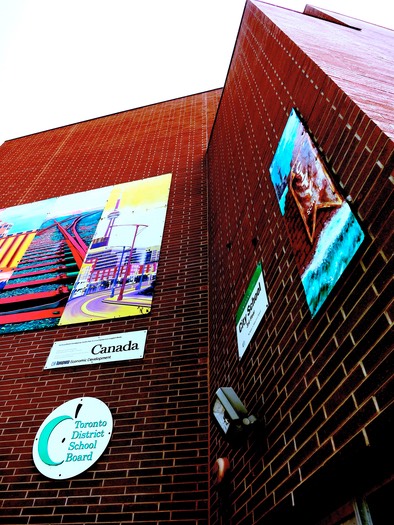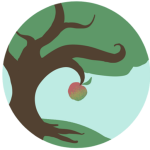
By Kurt Bartlett
City School, http://www.cityschooltoronto.com/
I had no idea what to expect walking into an alternative school on only my second practicum. I had done some reading about alternative schools in my time at OISE, but nothing I could have read could have prepared me for how challenging, awesome, exciting, and interesting it is to be in an environment like that.
Many of the alternative schools in the TDSB exist for students that don’t “fit” into a “standard” school for a variety of reasons. Maybe they’ve had trouble with attendance. Maybe they have anxiety about class sizes. Maybe they want to be in a smaller community. Or maybe they want more freedom in how they learn. Alternative schools provide all of these alternatives, which can provide quite a challenge for teachers (and teachers to be, in my case). They also provide a friendly and inviting community that makes you feel welcome the second you walk through those front doors.
To make the most of my time teaching history and political science at this alternative school, I worked on creating several strategies that would help the class and I get on the same page. Far be it for the teacher-candidate to tell anyone how best to teach, but I believe by following and retooling these strategies at various points during my practicum I was able to make the most of my experience teaching.
BE ADAPTABLE
When teachers enter any classroom, they are confronted with a variety of human beings that are interested in an array of topics, that learn through different methods, and that process information at different times and in different ways.
At this time, I was teaching the Grade 11 Genocide class (CHG381), a class of tremendous importance and one that is constantly relevant. I had an idea of how best to teach the material of the Armenian Genocide, but I found that my approach wasn’t exactly landing. The students were doing their work, but they weren’t discussing the materials, they weren’t bringing in questions, and they didn’t seem invested. Considering the importance of the material, I shifted gears. I thought a self-guided approach may yield more success, and I was right.
Before we dove into the content, students split into groups and were given newspaper articles written at different points in the genocide. They were then asked to create a list of questions they wanted answered on a big sheet of paper. This was an opportunity to get the students to inquire about the content before being given the answers. They were given fragments of information and asked where the gaps were. After we had a big list of questions, I knew they had just created a list of learning goals for themselves. Across the sheets of papers were questions about the genocide, how it happened, why it happened, who was involved, and who wasn’t involved? Questions were both specific and general. It was a perfect road map.
As we moved through the content and the unit, students would constantly come back to the questions that they created with the answers they had found. They were like detectives unraveling a mystery. By the time we reached the end of our unit, students were able to answer the questions directly on the big sheets of paper with post-it notes. This proved an excellent bookend to the unit, and one that would never have existed if I had followed my plans unwaveringly. It seems that all teachers begin to develop an intuition about whether or not their students are invested in the content. Being a teacher candidate, I suppose my sense is just starting to develop.
WORK WITH THE COMMUNITY
It can be daunting entering a school so small and connected, but if you’re willing to put in the work, it can also be incredibly rewarding. Since the alternative school was much smaller than a “standard” TDSB school, everyone was much more interconnected. So when one student was experiencing a challenge, you could bet that it would impact another student as well, which could set off a chain reaction. That also meant that there were many more resources available.
During my time at the alternative school, I saw many fantastic examples of student leadership. Students were invested in the community, just as much as teachers, which often meant that students would happily volunteer to work with other students to make sure everyone was on the same page. These examples of student leadership made the classroom community tighter and made the many demands on the teacher much easier to manage. It is always important to acknowledge these instances of leadership inside the classroom. These student leaders constantly set goals and examples for other students to follow. As much as it would be awesome for a teacher candidate to be the leadership figure in the classroom, my job was often to observe and make a mental note about what works, what doesn’t, and what can I do in the future to better codify a process that will lead to a successful classroom. Thankfully, my Associate Teacher was an absolute rock star and I was able to be as involved as I wanted.
As a final message, I would encourage any aspiring teachers or teacher candidates to try working or volunteering in an alternative school. The sense of community is really astounding, and it forces you out of your comfort zone, into a place where you need to be flexible and perceptive. Having taught in a few different countries, and volunteered in several different school boards, this was one of my favourite teaching experiences.
Kurt Bartlett is a teacher candidate entering his second year at OISE. He taught in Taiwan and north China for the previous two years.


